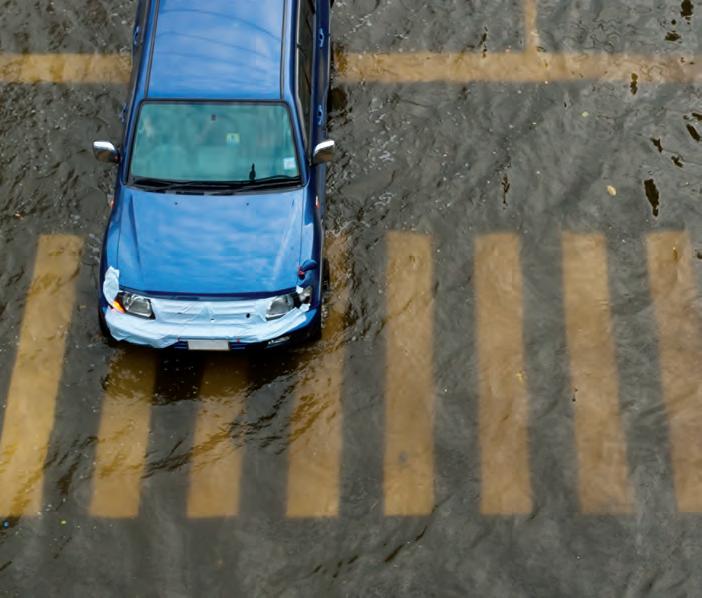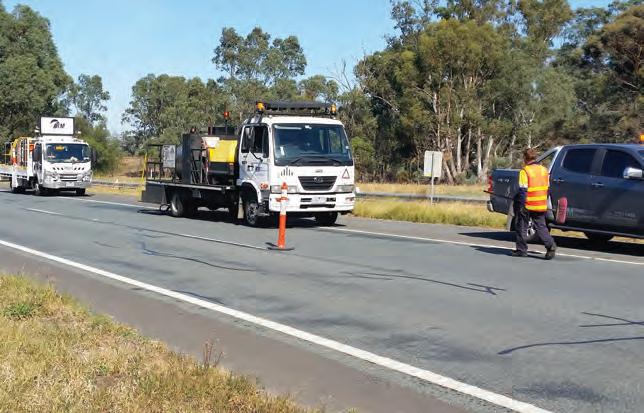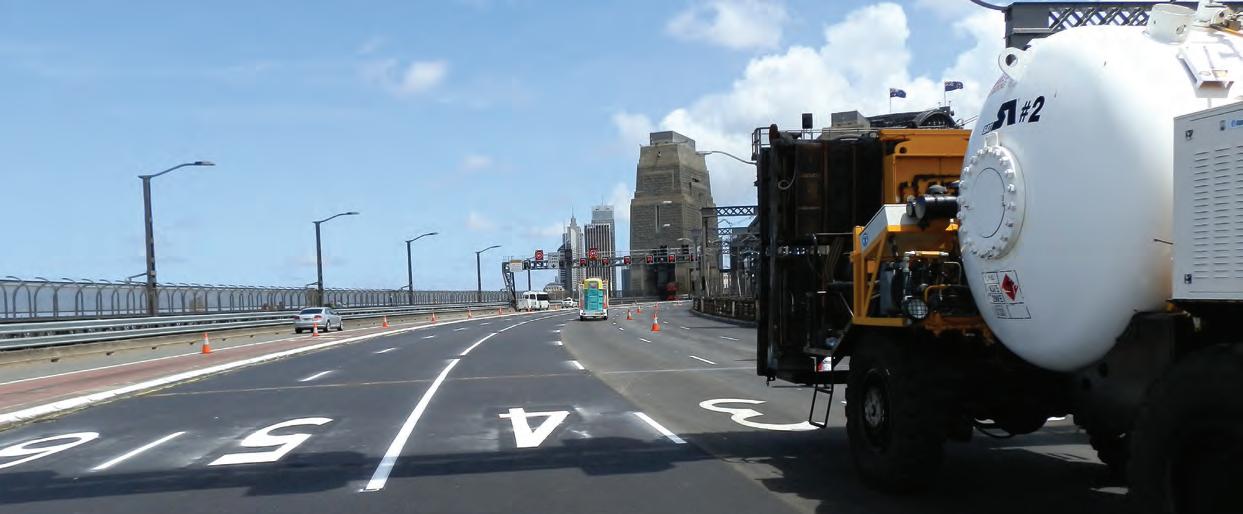
3 minute read
ARRB thought leadership
GETTING THE BASICS RIGHT
IT’S CRITICAL FOR OUR CONNECTED AND AUTOMATED TRANSPORT FUTURE THAT THE ROADS AND TRANSPORT INDUSTRY GET THE BASICS RIGHT NOW, WRITES MIKE SHACKLETON, AUSTRALIAN ROAD RESEARCH BOARD CHIEF RESEARCH OFFICER.
Some of the most dramatic aerial photographs of recent times have been of areas of immense wealth alongside areas of soul-destroying poverty. Although not quite on the same scale, the transportation industry is faced with an equally divided reality.
On the one hand, we entertain visions of appealing streetscapes with tunnels below and drones above. We imagine a connected and autonomous future, in which data zips around the ether, keeping driverless vehicles on the straight and narrow – literally – while we relax, snooze or chat our way to our destination. On the other hand, we don’t get the basics of the present system right. Unless we do get them right, an automated transport future is a non-starter.
Rain is a part of life and has been since before the Romans built their first paved roads. Keeping large and dangerous bodies of water off roads and rail infrastructure should be a priority for a range of reasons, not least safety. However, every time it rains heavily, drainage structures on many roads and railway lines fail to do their job. This is disruptive for rail users and tram users, who then get shifted onto buses (or, worse still, into their cars) to face the increased danger on roads along with existing road users. Unless we get drainage right, autonomous vehicles will not be able to position themselves, because they

need to ‘know’ where the kerb is and the extent of the traffic lane to navigate safely.
Similarly, our traffic light systems seem to have been designed for arid regions. Traffic lights at major intersections are regularly on flashing amber after heavy rainfall. Road users are usually frustrated at these times, and very few obey – or remember – the rules for negotiating the intersection. How then will autonomous vehicles cope? They may very well be able to interpret flashing amber lights, but with a ‘rational’ brain interacting with our irrational and frustrated ones, there is plenty of scope for disaster!
Lane markings are an important safety feature on our road network. There are some major roads around my home city, Melbourne, where between dusk and dawn, drivers have no guidance due to faded paint and poor lighting. Unless we get this right, autonomous vehicles will not be able to position themselves and will be over-standard vehicles with a great deal of technological redundancy.
It may seem odd for the National Transport Research Organisation to be advocating on getting the basics right and not just advocating for the research and development (R&D) needed to improve the sustainability and safety of our transport system. However, unless we focus on the basics, R&D-based attempts to create a step-change in our quality of life through smarter, safer, more sustainable transport will flounder because of the flawed and fragile underlying system to which it is applied.
Find out more about what ARRB can do in the area of CAV readiness by contacting us at info@arrb.com.au
Road Maintenance
ROAD MAINTENANCE HAS BEEN SEALING CRACKS AND FIXING ROADS ACROSS AUSTRALIA FOR OVER 40 YEARS. ITS FOCUS ON RESEARCHING AND PERFECTING WAYS TO KEEP CRACKS FROM LEADING TO TOTAL FAILED AREAS HAS HELPED SAVE COUNCILS AND ROAD OWNERS THOUSANDS. THE COMPANY IS ALSO SET ON FINDING INNOVATIVE SOLUTIONS FOR WASTE TYRES TO KEEP AUSTRALIA BEAUTIFUL.



ROAD MAINTENANCE HAVE DEVELOPED AND NOW USE A CRACK SEALING PRODUCT WHICH CONTAINS WASTE PLASTICS AND TYRE CRUMB.


FEEL GOOD ROADS











